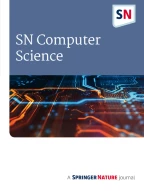Abstract
Smart manufacturing with Manufacturing Digital Twin Model (MDTM) has a variety of advantages. Due to the difficulty of the Digital Twin (DT) production process, associated methods, manual reconfiguration was time-consuming and expensive when a production process. If industrial robots with sophisticated functions and rigid programming are used in the manufacturing system, this challenge will be a challenging task. To enable automatic reconfiguration, in this work, a digital twin virtual reality concept of robotics-based intelligent production systems is proposed with a novel model. This framework accurately reflects physical production resources and also depicts the functionalities and interconnections of the DTs. Prototype system is created to show the reconfigurable of the DT production process works and was described to undertake flexible production task reconfiguration.










Similar content being viewed by others
Data availability
Not applicable.
References
Tao F, Xiao B, Qi Q, Cheng J, Ji P. Digital twin modeling. J Manuf Syst. 2022;64:372–89.
Ramu SP, Boopalan P, Pham QV, Maddikunta PKR, Huynh-The T, Alazab M, Gadekallu TR. Federated learning enabled digital twins for smart cities: Concepts, recent advances, and future directions. Sustain Cities Soc. 2022;79: 103663.
Sony M, Antony J, Mc Dermott O, Garza-Reyes JA. An empirical examination of benefits, challenges, and critical success factors of industry 4.0 in the manufacturing and service sector. Technol Soc. 2021;67:101754.
Garikapati P, Balamurugan K, Latchoumi TP, Malkapuram R. A cluster-profile comparative study on machining AlSi 7/63% of SiC Hybrid composite using agglomerative hierarchical clustering and K-means. SILICON. 2021;13:961–72.
Leng J, Sha W, Wang B, Zheng P, Zhuang C, Liu Q, Wang L. Industry 5.0: Prospect and retrospect. J Manuf Syst. 2022;65:279–95.
Suler P, Palmer L, Bilan S. Internet of things sensing networks, digitized mass production, and sustainable organizational performance in cyber-physical system-based smart factories. J Self-Gov Manag Econ. 2021;9(2):42–51.
Nguyen T, Duong QH, Van Nguyen T, Zhu Y, Zhou L. Knowledge mapping of digital twin and physical internet in supply chain management: A systematic literature review. Int J Prod Econ. 2022;244: 108381.
Latchoumi TP, Ezhilarasi TP, Balamurugan K. Bio-inspired weighed quantum particle swarm optimization and smooth support vector machine ensembles for identification of abnormalities in medical data. SN Appl Sci. 2019;1:1137. https://doi.org/10.1007/s42452-019-1179-8.
Leng J, Chen Z, Sha W, Lin Z, Lin J, Liu Q. Digital twins-based flexible operating of open architecture production line for individualized manufacturing. Adv Eng Inform. 2022;53: 101676.
Zeb S, Mahmood A, Hassan SA, Piran MJ, Gidlund M, Guizani M. Industrial digital twins at the nexus of nextG wireless networks and computational intelligence: A survey. J Netw Comput Appl. 2022;200:103309.
Segovia M, Garcia-Alfaro J. Design, modeling and implementation of digital twins. Sensors. 2022;22(14):5396.
Singh P, Bose SS. A quantum-clustering optimization method for COVID-19 CT scan image segmentation. Expert Syst Appl. 2021;185: 115637.
Wang Y, Xu R, Zhou C, Kang X, Chen Z. Digital twin and cloud-side-end collaboration for intelligent battery management system. J Manuf Syst. 2022;62:124–34.
Pal S, Jadidi Z. Analysis of security issues and countermeasures for the industrial internet of things. Appl Sci. 2021;11(20):9393.
Lin CH, Wang KJ, Tadesse AA, Woldegiorgis BH. Human-robot collaboration empowered by hidden semi-Markov model for operator behaviour prediction in a smart assembly system. J Manuf Syst. 2022;62:317–33.
Rožanec JM, Lu J, Rupnik J, Škrjanc M, Mladenić D, Fortuna B, Kiritsis D. Actionable cognitive twins for decision making in manufacturing. Int J Prod Res. 2022;60(2):452–78.
Jiang F, Ma L, Broyd T, Chen W, Luo H. Digital twin enabled sustainable urban road planning. Sustain Cities Soc. 2022;78: 103645.
Cai L, Li W, Luo Y, He L. Real-time scheduling simulation optimisation of job shop in a production-logistics collaborative environment. Int J Prod Res. 2022; p. 1–21.
Singh P. FQTSFM: a fuzzy-quantum time series forecasting model. Inf Sci. 2021;566:57–79.
Latchoumi TP, Swathi R, Vidyasri P, Balamurugan K. Develop new algorithm to improve safety on WMSN in health disease monitoring. In: 2022 International Mobile and Embedded Technology Conference (MECON), 2022; pp. 357–362. IEEE.
Wang Y, Kang X, Chen Z. A survey of digital twin techniques in smart manufacturing and management of energy applications. Green Energy Intell Transport. 2022; p. 100014.
Maheshwari P, Kamble S, Belhadi A, Mani V, Pundir A. Digital twin implementation for performance improvement in process industries-A case study of food processing company. Int J Prod Res. 2022;p. 1–23.
Wu L, Leng J, Ju B. Digital twins-based smart design and control of ultra-precision machining: a review. Symmetry. 2021;13(9):1717.
Funding
The authors declare that no funding has been received to carry out the work.
Author information
Authors and Affiliations
Corresponding author
Ethics declarations
Conflict of Interest
The authors declare that they have no conflict of interest.
Additional information
Publisher's Note
Springer Nature remains neutral with regard to jurisdictional claims in published maps and institutional affiliations.
This article is part of the topical collection “Research Trends in Computational Intelligence” guest edited by Anshul Verma, Pradeepika Verma, Vivek Kumar Singh and S. Karthikeyan.
Rights and permissions
Springer Nature or its licensor (e.g. a society or other partner) holds exclusive rights to this article under a publishing agreement with the author(s) or other rightsholder(s); author self-archiving of the accepted manuscript version of this article is solely governed by the terms of such publishing agreement and applicable law.
About this article
Cite this article
Ashok, J., Tallapragada, V.V.S., Padmaja, D.L. et al. Modelling and Implementation of Microcontroller System Robotic Devices Through Digital Twins with the Modernization of Complex Systems. SN COMPUT. SCI. 4, 497 (2023). https://doi.org/10.1007/s42979-023-01938-3
Received:
Accepted:
Published:
DOI: https://doi.org/10.1007/s42979-023-01938-3
